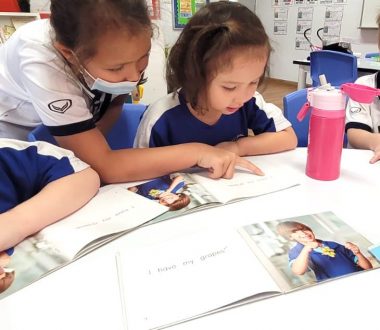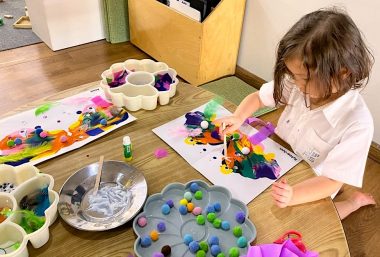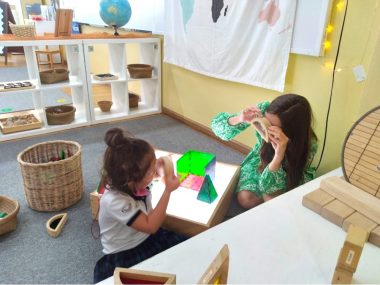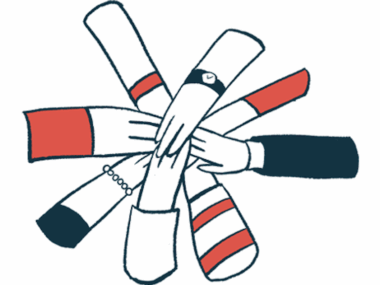Honoring the Passionate Teachers Who Make a Difference
How inclusion benefits a columnist's daughter with AADC deficiency
Written by |

Our daughter, Rylae-Ann, has a rare disease known as aromatic l-amino acid decarboxylase (AADC) deficiency. Caring for a rare disease child is multifaceted. It includes specific attention to diet, therapy, and education, and requires a support network.
My wife, Judy, and I are educators, and we wanted the best education for our child. Unfortunately, many of the schools where we lived in Singapore weren’t inclusive and didn’t offer special education services. So we gave up our jobs and lives there and headed for Thailand.
Special education in the United States
The U.S. special education program serves more than 7 million students and receives separate federal funding. As an article published in Education Week notes, “In fiscal year 2018, the federal government earmarked $12.3 billion for the education of children ages 3-12 with disabilities.”
Globally, many in the education profession use the U.S. program as a model. One of the latest initiatives is inclusive education, which has resulted in about 66% of special education students spending at least 80% of their time in regular education classes rather than separate learning environments.
When Judy and I were deciding on our daughter’s education, we looked for a school with a well-funded special education program that emphasized inclusion. On top of that, they’d need to have a job opening for my wife or me. The task was challenging, to say the least. But like so much that has transpired on our journey, fate smiled and gave us our answer.
The school that unites hearts
Our daughter is a proud student at Ruamrudee International School in Bangkok, Thailand. Ruamrudee is a Thai word that means “union of hearts.” The name perfectly captures the school’s welcoming philosophy and caring environment that it has provided for more than 60 years. The school was established in 1957 by the Redemptorist Fathers, so they’ve had plenty of time to build their strong foundation.
My wife is a learning support teacher at the school but serves elementary students other than our daughter. Our daughter’s case falls to the other support teachers, which is an essential arrangement.

Rylae-Ann reads during a reading group where students support one another. (Courtesy of Richard E. Poulin III)
The passionate teachers
Many stakeholders cater to our daughter’s education. I don’t want to leave anyone out, so I would like to thank every teacher who’s taught my daughter. You have changed many lives throughout your career, and I’ve seen firsthand your dedication to your profession and the art of teaching.
The homeroom teacher is the core of a student’s early childhood education experience. Ms. Julie, Rylae-Ann’s homeroom teacher, creates an inviting learning environment that is layered with opportunities for skill development. On top of this feat, she also ensures inclusivity, which creates a more enriching learning experience for all students.
Rylae-Ann’s learning support teacher, Ms. Sherwynne this year and Ms. Crystal last year, visits her several times a week. Both always seize the opportunity to teach, even during unscheduled meets, such as on the playground or in the lunchroom. To maximize our daughter’s progress and to help create inclusion, Ms. Sherwynne liaises with all of Rylae-Ann’s teachers so that her Individualized Education Program is embedded throughout her day.
Speech therapy services were available to Rylae-Ann only after we moved to Thailand. We did our best to manage her speech development before then, but we needed a specialist. That was why we were excited to learn that Rylae-Ann would have Ms. Chelsea, a dedicated speech and language pathologist, at school. Depending on the activity, this is offered as a pull-out or push-in support several times a week.
Finally, her specials teacher provides focused lessons on music, art, technology, library, Thai, and physical education (PE). As parents, the PE class was the subject that had most of our attention. Despite the remarkable progress Rylae-Ann made after having gene therapy, her physical abilities are an area of weakness that we focus on supporting. We worried she would be injured, but we knew she needed the class.
Thankfully, her PE teacher, Mr. Mark, is well-trained and shares a passion for inclusive education. Furthermore, he can embed academics, morals, and intrinsic skills into his physical lessons. It is a fantastic class that has supported many of Rylae-Ann’s recent triumphs.

Rylae-Ann works on a painting during art class at her school.(Courtesy of Richard E. Poulin III)
Creating awareness
Our daughter can be challenging, but her teachers never show it. Instead, they reassure us and provide us with strategies to improve care at home. They have also supported our goals of creating awareness for AADC deficiency and rare diseases. On several occasions, they’ve even allowed recording and given interviews. Recently, the Associated Press reported extensively on our daughter and her life after gene therapy. The teachers continued on with their day without complaining about the extra work or having an extra set of eyes on them while they were trying to teach.
Our daughter’s teachers make a difference every day and continue giving their entire hearts to all their students. Although they teach my daughter, I have learned how to improve my own teaching by seeing the action that matters most: love.

Rylae-Ann’s homeroom teacher uses the art of play to create engaging learning environments. (Courtesy of Richard E. Poulin III)
Note: AADC News is strictly a news and information website about the disease. It does not provide medical advice, diagnosis, or treatment. This content is not intended to be a substitute for professional medical advice, diagnosis, or treatment. Always seek the advice of your physician or other qualified health provider with any questions you may have regarding a medical condition. Never disregard professional medical advice or delay in seeking it because of something you have read on this website. The opinions expressed in this column are not those of AADC News or its parent company, Bionews, and are intended to spark discussion about issues pertaining to aromatic l-amino acid decarboxylase deficiency.







Leave a comment
Fill in the required fields to post. Your email address will not be published.